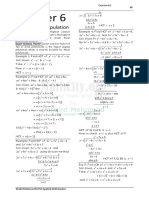0% found this document useful (0 votes)
78 views21 pages#4dev - Smart Contract Security
This document summarizes a workshop on smart contract security. It discusses key differences in smart contract programming compared to traditional programming, including that real money is at stake in blockchain contracts. It provides an overview of the Ethereum platform and smart contracts. It also outlines several common mistakes to avoid when writing smart contracts, such as unexpected behavior, dishonest individuals, misaligned incentives, call stack depth issues, and blockhash bugs. The document emphasizes that blockchain programming requires carefully constructing contracts to align incentives and avoid bugs.
Uploaded by
WillCopyright
© © All Rights Reserved
We take content rights seriously. If you suspect this is your content, claim it here.
Available Formats
Download as PDF, TXT or read online on Scribd
0% found this document useful (0 votes)
78 views21 pages#4dev - Smart Contract Security
This document summarizes a workshop on smart contract security. It discusses key differences in smart contract programming compared to traditional programming, including that real money is at stake in blockchain contracts. It provides an overview of the Ethereum platform and smart contracts. It also outlines several common mistakes to avoid when writing smart contracts, such as unexpected behavior, dishonest individuals, misaligned incentives, call stack depth issues, and blockhash bugs. The document emphasizes that blockchain programming requires carefully constructing contracts to align incentives and avoid bugs.
Uploaded by
WillCopyright
© © All Rights Reserved
We take content rights seriously. If you suspect this is your content, claim it here.
Available Formats
Download as PDF, TXT or read online on Scribd
/ 21























































































